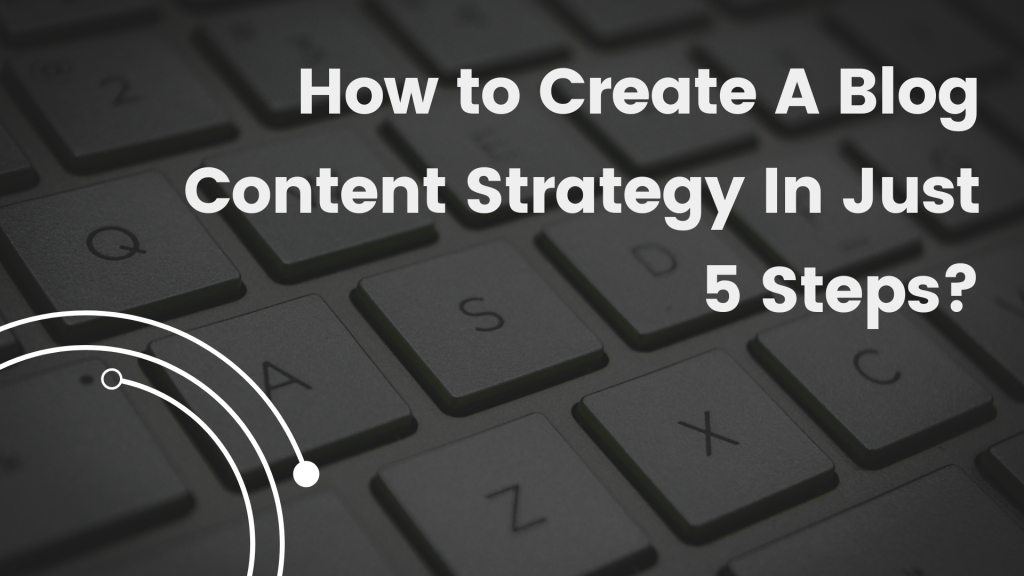How to Create A Blog Content Strategy In Just 5 Steps?

In today’s world, content is king. Whether you are a blogger, business owner, or marketer, creating a solid content strategy is critical for success. With so many blogs and websites vying for attention online, it’s important to develop a unique approach that will capture your audience’s attention and keep them coming back for more.
In this blog post, we will take a closer look at how to create a blog content strategy that will help you achieve your goals.
Step 1: Define Your Audience
The first step in creating a content strategy is to define your audience. Who are they? What are their needs, desires, and pain points? Understanding your audience will help you create content that resonates with them and keeps them engaged.
To define your audience, start by creating buyer personas. These are fictional representations of your ideal customers. You can create these personas by researching your target audience’s demographics, behavior, and needs. This can be done by analyzing data from your website, social media channels, or conducting surveys.
Once you have defined your audience, you can begin to create content that speaks directly to their interests and needs.
Step 2: Set Your Goals
The second step in creating a content strategy is to set your goals. What do you hope to achieve with your content? Do you want to increase website traffic, generate leads, or build your brand? Setting clear goals will help you measure the success of your content strategy.
To set your goals, start by identifying your key performance indicators (KPIs). These are the metrics that you will use to measure the success of your content. Some common KPIs include website traffic, conversion rates, and social media engagement.
Once you have identified your KPIs, set specific, measurable, attainable, relevant, and time-bound (SMART) goals. For example, if your KPI is website traffic, your SMART goal might be to increase website traffic by 20% within the next six months.
Step 3: Conduct Keyword Research
The third step in creating a content strategy is to conduct keyword research. Keywords are the words and phrases that people use to search for information online. By targeting the right keywords, you can improve your website’s search engine optimization (SEO) and drive more traffic to your site.
To conduct keyword research, start by brainstorming a list of keywords related to your niche. You can also use tools like Google Keyword Planner or SEMrush to find keyword ideas and see how competitive they are.
Once you have identified your target keywords, create a content calendar that includes topics that are relevant to those keywords.
Step 4: Create a Content Calendar
The fourth step in creating a content strategy is to create a content calendar. A content calendar is a schedule that outlines the topics, formats, and channels for your content.
To create a content calendar, start by brainstorming a list of topics that are relevant to your audience and target keywords. Then, organize those topics into a calendar that includes the date, format, and channel for each piece of content.
When creating your content calendar, be sure to consider the different types of content you will produce, such as blog posts, videos, infographics, or podcasts. Also, consider the channels you will use to distribute your content, such as social media, email, or your website.
Step 5: Develop a Content Creation Process
The fifth step in creating a content strategy is to develop a content creation process. A content creation process is a set of steps that you will follow to create high-quality content consistently.
To develop a content creation process, start by identifying the roles and responsibilities of your team members. Then, create a workflow that outlines the steps involved in creating and publishing content, such as researching, outlining, writing, editing, and publishing.
You should also establish guidelines.


